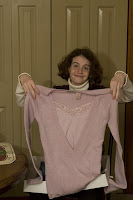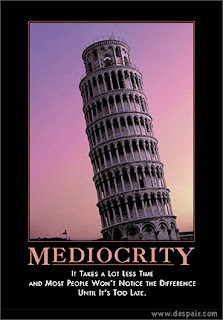
I’ve written once before about community-based instruction (CBI) trips that our children with significant disabilities have as part of their educational curriculum. As you can tell from my previous posting, I am not of fan of how the majority of the CBI trips are done.
Today Ashley is going to the Dollar Tree and to McDonalds for lunch. Trust me, Ashley already knows how to shop. She doesn’t need any further instruction in that skill! She also doesn’t eat anything McDonalds has to offer. We’re still working on her feeding program, and unfortunately, that program doesn’t include double cheeseburgers and fries. So what is Ashley going to get out of this particular CBI trip?
Yes, there will be opportunities for practicing language skills – and maybe even some orientation and mobility skills. There certainly won’t be many models for appropriate meal manners. Nothing against McDonalds, but it’s just not a place where most of us learn to use the correct utensil, where to put our napkin when the meal is finished, and how not to gulp our food. At Dollar Tree, she is not going to learn how to find ingredients for a meal she can prepare, nor will she be likely to find any necessary clothing items she may need. She and her classmates will be shopping for classroom decorations. I agree that might be a fun way to spend a couple of hours of her school day, but I believe every hour counts when it comes to actual academic skills for Ashley and her classmates.
One of the largest gaps between education of children with significant disabilities and their regular education peers centers around this issue of community-based instruction, in my opinion. Regular education students may take one field trip a year. Those regular education field trips strongly support the academic curriculum. The students prepare throughout the school year for the trip and normally have worksheets or testing which follow the field trip. Children in special education, particularly those with significant disabilities – those who need the most time on academic pursuits just by virtue of the fact that it usually takes them a little longer to absorb the material – spend hours outside the classroom every week or every other week on trips that do not support their curriculum (or supports it just incidentally).
I researched the Virginia Alternate Assessment Program, and explored the Aligned Standards of Learning, the items on which children with significant disabilities are assessed. I chose several of those ASOLs to see if a community trip could be used to support that curriculum, and of course, I discovered that it easily could. Following are some examples:
ASOL #1
E-RW 12 The student will demonstrate comprehension of information in reference materials.
(SOL 2.9) a) Use a table of contents.
b) Use pictures and charts.
c) Use dictionaries and indices.
The library seems a perfect spot for a community trip to support this ASOL.
ASOL #2
M-G7 The student will identify, describe, and sort three-dimensional (solid) concrete figures,
(SOL 2.20) including a cube, rectangular solid (prism), square pyramid, sphere, cylinder, and cone,
according to the number and shape of the solid’s faces, edges, and corners.
A museum, specifically a museum with an exhibit of modern art, seems tailor made to support this ASOL
ASOL #3
S-R 1 The student will investigate and understand that materials can be reused, recycled, and
conserved. Key concepts include
(SOL K.1) a) materials and objects can be used over and over again;
b) everyday materials can be recycled;
c) water and energy conservation at home and in school helps preserve resources for
future use.
How about a trip to a recycling plant in support of this ASOL?
ASOL #4
S-R 3 The student will investigate and understand that plants produce oxygen and food, are a
source of useful products, and provide benefits in nature. Key concepts include
(SOL 2.8) a) important plant products (fiber, cotton, oil, spices, lumber, rubber, medicines, and
paper);
b) the availability of plant products affects the development of a geographic area;
c) plants provide homes and food for many animals and prevent soil from washing
way.
A trip to a nursery or farm could easily be arranged to support this ASOL.
ASOL #5
S-IE 3 The student will investigate and understand basic types, changes, and patterns of weather.
Key concepts include
(SOL 2.6) a) temperature, wind, precipitation, drought, flood, and storms;
b) the uses and importance of measuring and recording weather data.
Most of the meteorological staff at local news stations welcome visits from school children.
ASOL #6
HS-C9 The student will recognize why government is necessary in the classroom, school,
and community by
(SOL 3.10) a) explaining the purpose of rules and laws;
b) explaining that the basic purposes of government are to make laws, carry out
laws, and decide if laws have been broken;
c) explaining that government protects the rights and property of individuals.
Virginia has a beautifully redesigned state capitol and Governor’s mansion that are open for tours daily. In addition, the current Governor of Virginia is very welcoming of people with disabilities. Why not a visit while the General Assembly is in session next Spring?
I really think it is time for teachers to take a fresh look at how to support their students with significant disabilities, especially in the area of community-based instruction. At least in Virginia now, there is a curriculum for those students, and it is time, in my opinion, for that curriculum to move to the forefront of the educational day for students with significant disabilities.























